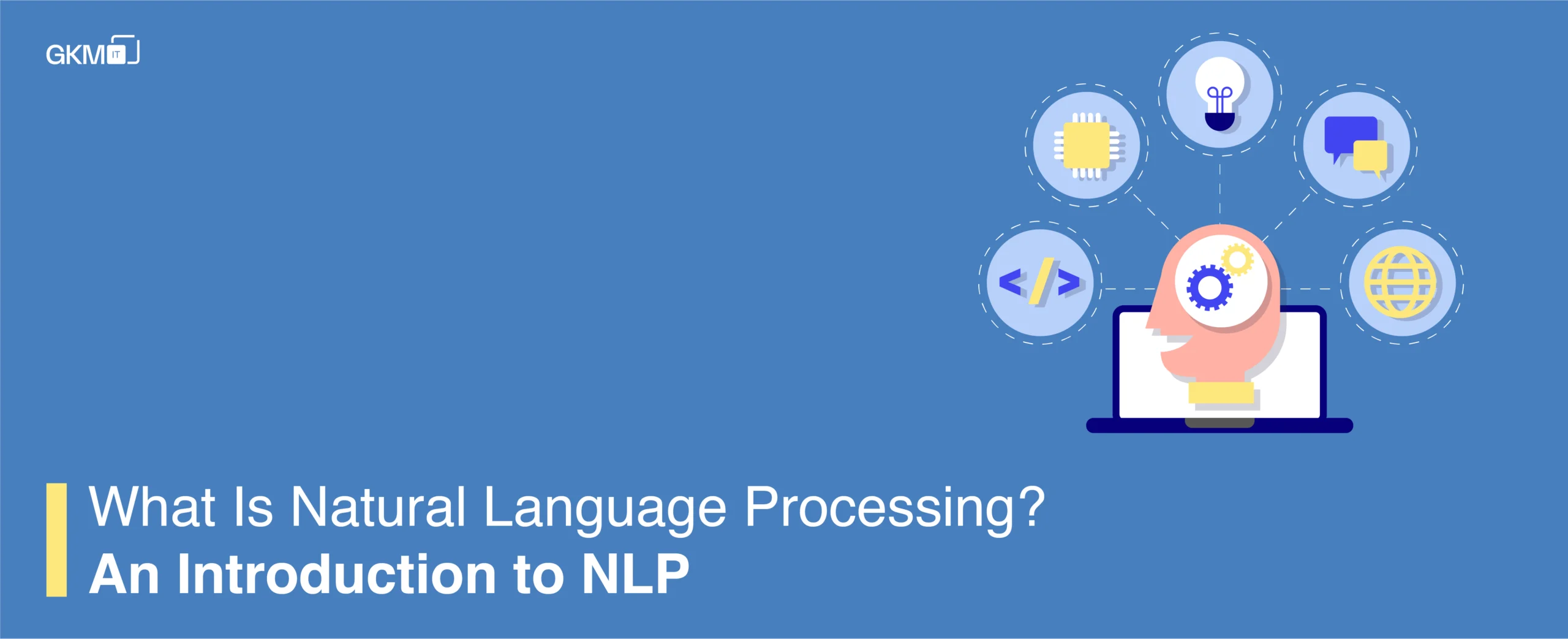
What Is Natural Language Processing? An Introduction to NLP
Natural language processing is concerned with the interaction between humans and machines and is a part of computer science and artificial intelligence. As we understand languages, the goal of NLP is to make machines understand languages in a better way. We daily come across things like virtual assistants, speech recognition, sentiment analysis, automatic text summarization, machine translation, etc, and the main driving force behind these things is NLP. Dive in and learn techniques and benefits of deep learning.
NLP introduction
It is the amalgamation of computer science, linguistics, and machine learning. It completely focuses on communication between humans and computers and generates human language. The perfect example of the NLP technique is virtual assistants like Amazon’s Alexa and Apple’s Siri and it includes things like machine translation and text-filtering.
It divided the field into three parts:
Speech recognition
Translation of spoken language into text
Natural language understanding
The ability of computers to understand what we say
Natural language generation
Natural language generation by a computer
Beneficial use of NLP and how it works wonders?
NLP algorithms have a variety of uses. The major use of NLP is to create software that understands human language. NLP can be a bit difficult to understand due to the complexity in nature of human language. Thus, learning and correct implementation is a bit complex.
Learn more about NLP through this article and get better equipped to use NLP successfully.
Example use of NLP
NLP algorithms are based on machine learning algorithms. Instead of hand-coding, numerous rule developers can automatically rely on machine learning to analyze and learn from a set of examples. The more data analysed, the more accurate the model will be.
Get to learn a wide range of NLP use cases with these examples of algorithms:
Use summarizer to summarize blocks of text and extract most important and central ideas, along with ignoring irrelevant information.
Create a chatbot using Parsey McParseface, a language parsing made by Google that uses point-of-speech tagging using deep learning models.
Using LDA, generate keyword topic tags and determine the most relevant words from a document. The complete algorithm is at the heart of Auto-Tag URL microservices.
Use name entity recognition to identify the type of entity extracted.
Sentiment analysis – this can be used to identify feeling, opinion, belief or statement-from negative, to neutral or to very positive.
Using Porterstemmer, reduce words to their roots or break up text into tokens using a tokenizer.
Let’s talk science!
NLP scientific advancement can be divided into three categories:
- Rule-based systems
It relies heavily on crafting domain-specific rules and is specifically used to solve simple problems, such as extracting structured data from unstructured data. But because of the nature of human language complexity, it failed.
- Classical machine learning models
This approach can be used to solve more challenging problems, which rule-based systems can’t solve. It relies more on a general approach to understanding language. Using handcrafted features and using this feature for a statistical machine learning model, which learns and functions on different patterns in the training set and can reason about unseen data. - Deep learning models
It is the trendiest and hottest among all research and applications. It generalizes better than classical machine learning approaches and doesn’t need a hand-crafted feature extractor and helps build end-to-end models. The learning capabilities of deep learning algorithms are more powerful than the classical ML. It paves its way to achieving the highest score on different challenging NLP tasks.
Process: how do computers understand the text?
As we know, computers only understand numbers, not characters, words, or sentences, so a transitional step is needed to build NLP models, which is called text representation. Focus on it as it is the word-level representation and the most widely used and intuitive one to start with. The other representation includes bit, character, sub-word, and sentence-level representations.
In the traditional NLP era, text representation is built on a basic idea, which means one-hot encoding, where the sentence is represented as a matrix of shape (NxN), where N is the number of unique tokens in the sentence. For example, in the above image, each word is represented as sparse vectors except one cell. This approach has two significant drawbacks. The first one is huge memory capacity and the second one is a lack of meaning representation, such as it can derive similarities between words.
Researchers from Google invented a new model of text representation in 2013 and they named it word2vec, a shallow deep learning model which represents words in dense vectors and captures semantic meaning between related terms. The deep research has further built on top of wor2vec, such as GloVe FastText.
Wrapping up-
In machine learning, the deep learning algorithm translates language by starting with a sentence and generates vector representations that represent it. Then it generates words in another language and entails the same information. To summarize, NLP is a combination of deep learning and vectors, which represent words, phrases, etc to some degree of extent.
Related Blogs-
Remote Work In The It Industry List Of Benefits And Best Practices
6 Key Skills For Scrum Masters
Top 10 Tech Skills To Learn 2024
Remote Work In The It Industry List Of Benefits And Best Practices